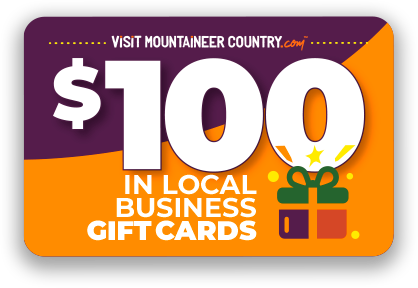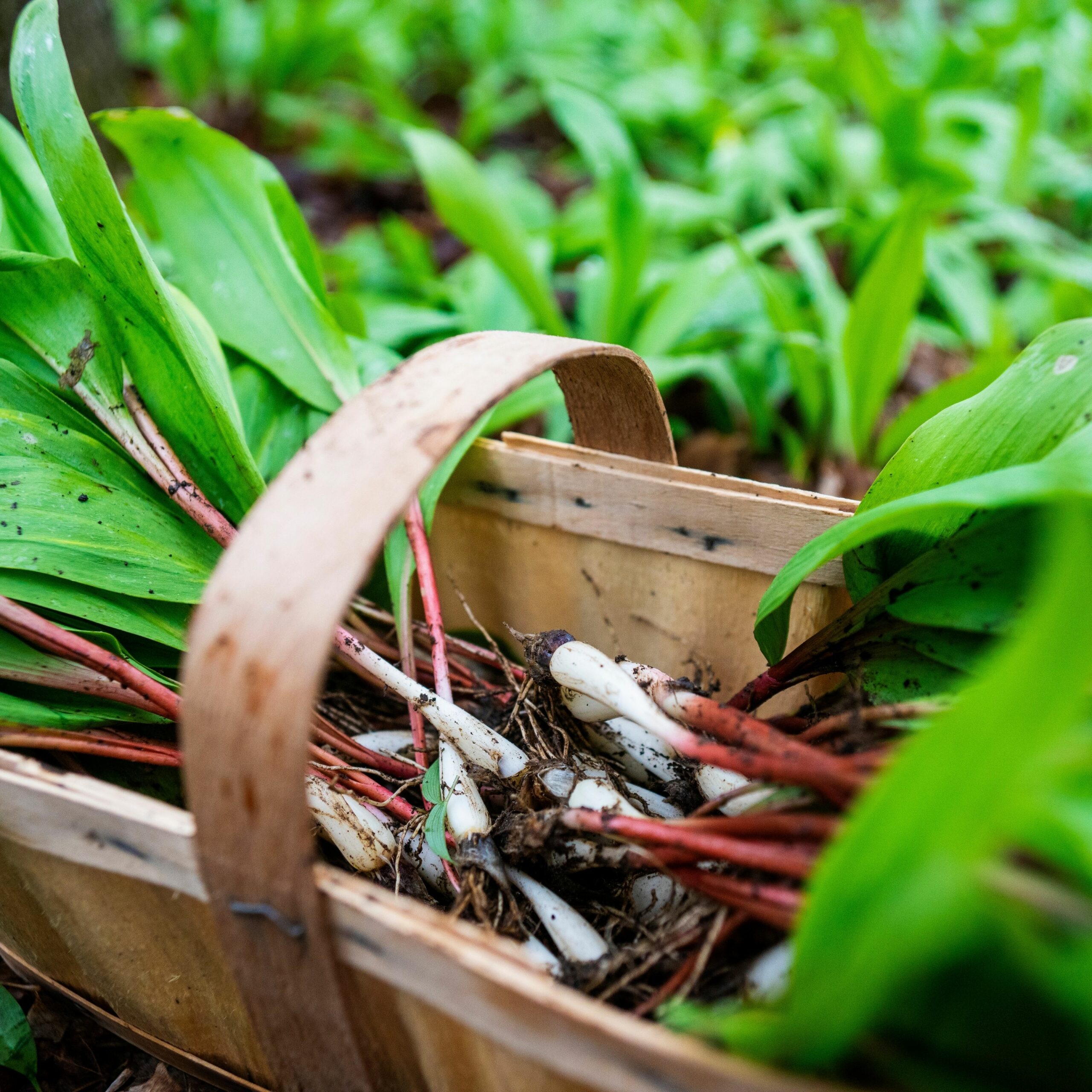You may have heard the word “ramps” either on social media, from friends, on menus at Appalachian restaurants, or in local advertisements. Don’t be confused, this ramp is not the typical ramp many think of. It is not an accessibility slope, and it is also not found in skateparks. This ramp is found in the ground and on the dinner table in Mountaineer Country.
What are ramps?
Ramps are a species of wild onions. However, they differ from other onion-related species such as shallots, leeks, and scallions. Despite being misleadingly referred to as wild leeks or spring onions, ramps’ flavor differ from those of traditional vegetables. They have a milder taste than leeks but have a stronger garlic flavor than shallots. Ramps also have a delicate look, with two leaves, a white bulb and the unique red hue between the leaves and bulb.
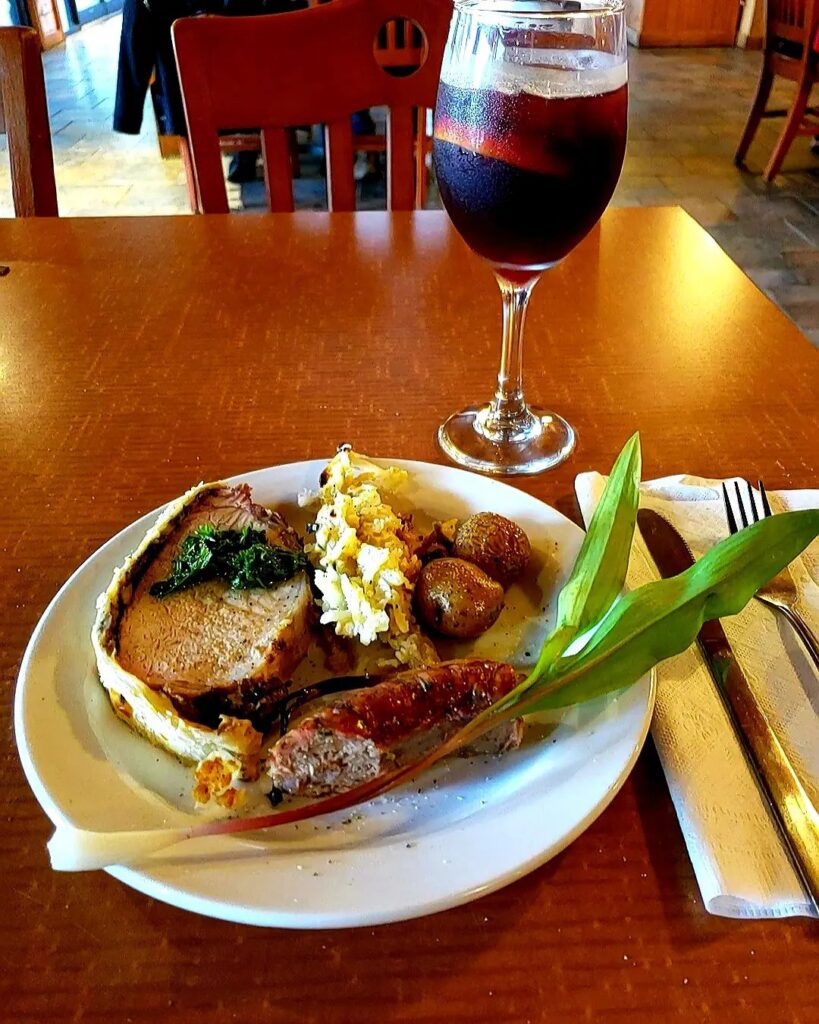
(Image courtesy of @JoGoesEverywhere)
Why are ramps so popular?
One potential reason ramps are so popular is because their season is brief. Ramps are only in season from late April to early June, creating a high demand for them in the summer months. They are also native to West Virginia, making them a part of WV’s Appalachian culture!
Where can I try ramps?
Many restaurants in Mountaineer Country have unique and specialty menu items that include ramps during their available season. Try one of these time-sensitive dishes from our local restaurants before ramp season ends!
Black Bear Burritos Evansdale’s “Adobo Flash Player” Tacos start on double-layered white corn tortillas. They are stacked on arcadian greens, citrus-braised pork shoulder with caramelized onions and grilled fresh jalapenos, smoked gouda cheese, pickled red onions, and carrots pickled with ramp vinegar. All topped off with a charred mango adobo sauce and served with tortilla chips.
Zeke’s Breakfast and Bakes in Downtown Morgantown offers a ramp bagel. Use their Mountaineer Deal when you visit for a $1 drip coffee with purchase.
Iron Horse Tavern, also in Downtown Morgantown, has multiple menu items including ramps. The Spring Wings are a whole wing — baked, char-grilled or fried — with house-made garlic parmesan and ramp sauce. The Ramp Burger comes with pimento cheese, bacon jam, and fresh ramp tops in between two slices of texas toast.
Tips for ramp foraging
Foraging for ramps is a time-honored tradition in Appalachia. It’s important to be aware of best practices and etiquette before setting out to find some ramps of your own. The Monongahela National Forest has these pointers to share:
- Re-selling ramps collected for personal use is prohibited. Personal use is defined as 2 gallons per person at any one time. (~180 whole plants)
- You should only collect ramps in patches with >100 plants
- Do not harvest from patches that have already been harvested
- When harvesting from a larger clump of plants, only take around one-fifth of the clump. This way the patch will recover faster
- When digging for bulbs, use a soil fork or a small trowel, shovels will disrupt the roots of nearby ramps. To dig a ramp, loosen the soil with your trowel, and use a knife to cut the roots beneath the bulb
- After you dig a ramp, cover the soil with leaves. This reduces the chances of invasive species coming into the patch.
Observing these practices is key, because otherwise we won’t be able to continue to enjoy this delicious plant year after year.
Looking to grow your own ramps? There are informational resources for growing ramps on your personal property here!
Can I cook with ramps?
Of course! There are many recipes for including ramps in your dishes at home. We have seen many West Virginia residents show their creative ramp dishes on social media:

(Ramp coleslaw on a cheddar brat made by @cburkhardt45)
One user created a ramp coleslaw on a cheddar brat. They also made ramp-stuffed chicken breasts. Another user made a dish including potatoes and ramps. And, although ramps are not the same as onions, they can be used in many similar ways and can easily be included in a dish. Just see for yourself!
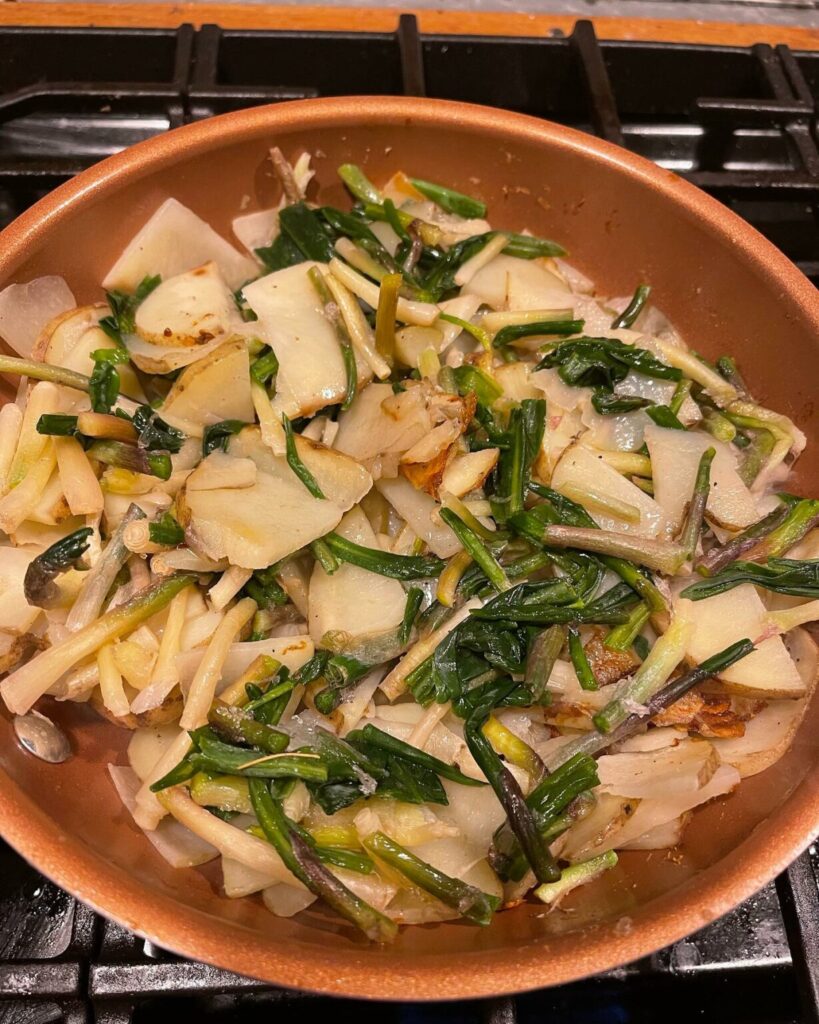
(Ramps and potatoes cooked by @lrcbnb)
You can also purchase items such as ramp salt and ramp butter. These items are often more accessible than a ramp plant and allow you to incorporate the unique ramp flavor into any dish at home!
The possibilities for ramp-made dishes are endless. You can purchase ramps at farmers’ markets, specialty grocery stores, or even grow your own!
Loving this Mountaineer Country food education? Check out some more West Virginia Delicacies on your own!
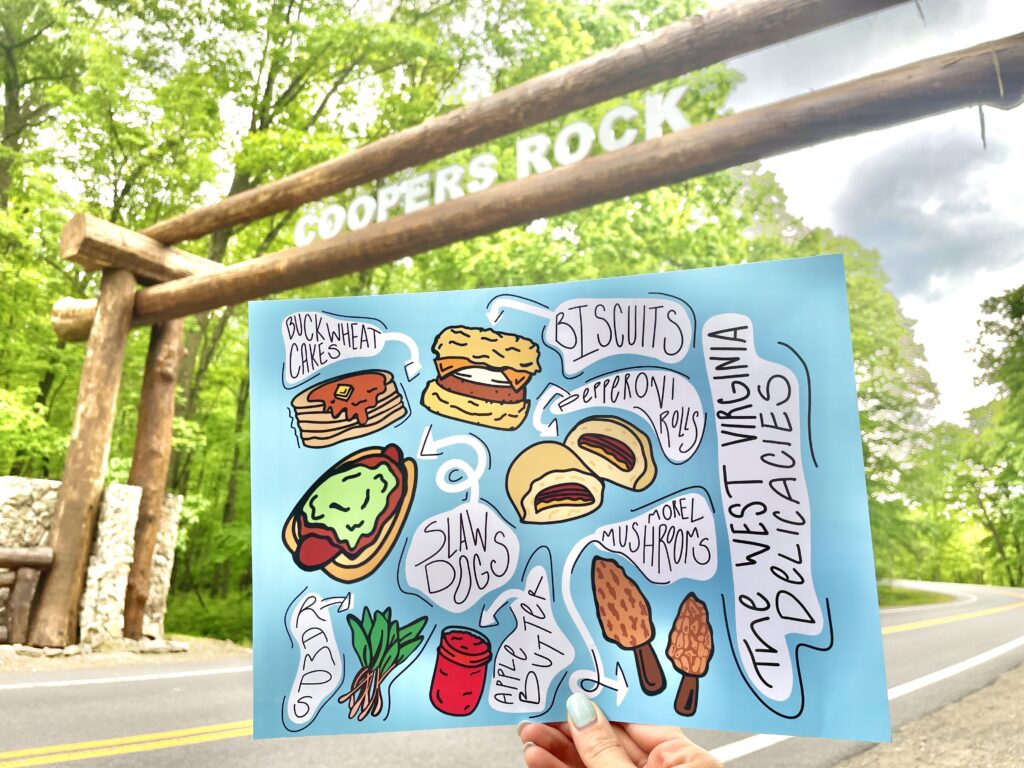
(Art print by West Virginia business, Overlook Design Studio.)
Pepperoni Rolls: Originating in Fairmont, these snacks are West Virginia’s unofficial state food. Make them yourself, and share them with your favorite people. Download our recipe card!
Buckwheat Cakes: Similar to a traditional pancake, Buckwheat pancakes have a distinct flavor often referred to as nutty or bitter. Try them for yourself at the annual Preston County Buckwheat Festival!
Morel Mushrooms: Only growing in the Appalachian, this wild mushroom has an earthy, nutty flavor with a meat-like texture. Morel mushrooms are highly sought after and are a must-have in West Virginia.
Biscuits: Tudor’s Biscuit World was founded in Charleston and biscuits soon became a West Virginia staple. Served with sausage gravy on top, filled with ham, or simply eaten plain biscuits are a must-try when visiting Mountaineer Country.
Slaw Dogs: Hot dogs topped with chili, coleslaw, mustard, and onions were first seen in West Virginia during the Great Depression. Give them a try to travel back in time.
Apple Butter: Made from slow-cooking applesauce in cider or water to create a soft butter consistency, apple butter is loved by many West Virginians. You can try, and celebrate, this delicacy at the annual Apple Butter Festival.
Show us how you grow, cook, and enjoy these Mountaineer Country staples. Use #VisitMountaineerCountry on your social media posts for a chance to be featured.
